We’ve been joking about feral tomatoes for years, but recently I’ve started observing them in the wild.
So to speak.
Sometime last spring, a tomato must have been dropped in the planter next to the parking structure near work. One of the seeds sprouted, and that plant somehow survived all the remodeling and landscaping.
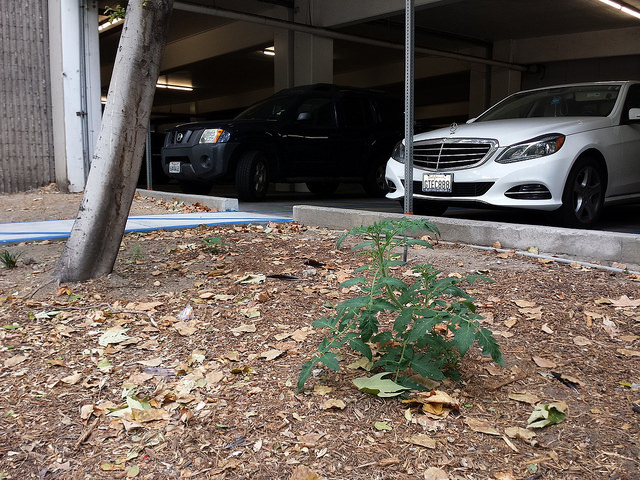
By June it was growing its own tomatoes. In fact, it was growing more tomatoes than the plants in our garden.
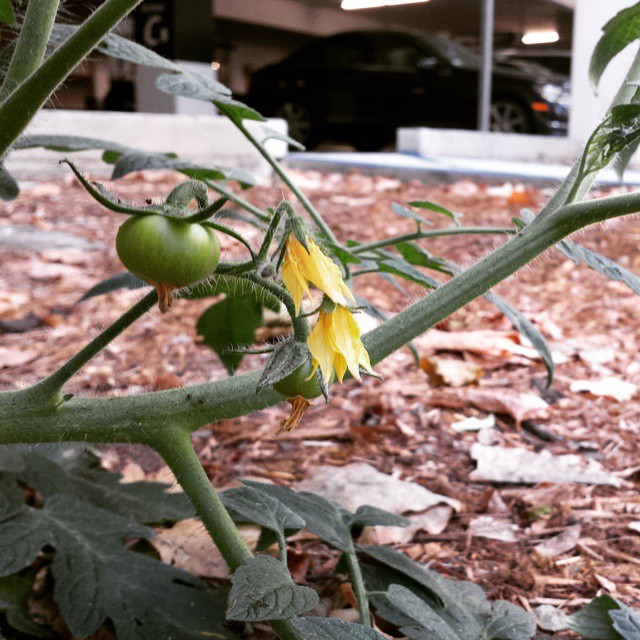
By July, they were starting to get buried in leaves from a nearby tree. Imported trees get really confused by California’s climate, and I expect it’s being watered less due to drought restrictions.
Every once in a while I’d notice a tomato had turned red, and the next time I saw it, that tomato would be gone. I assume birds have been eating them.
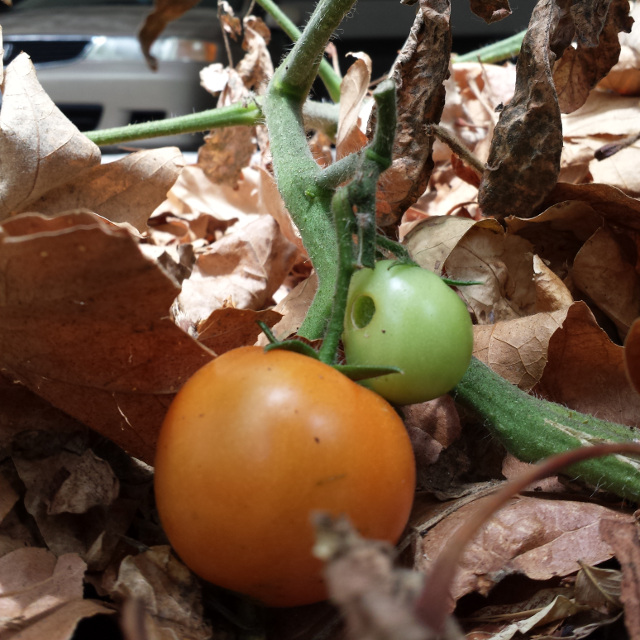
As the summer went on, it started succumbing to the same kind of mildew or whatever that’s been attacking the tomato plants at home. I made a habit of checking daily to see if it was still there.
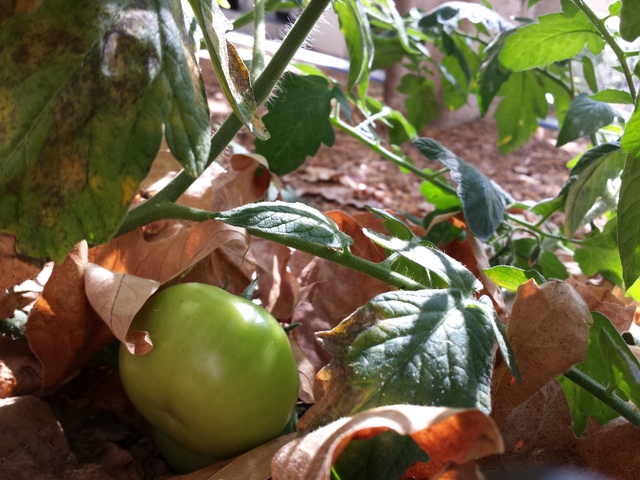
Sometime over Labor Day weekend, it was torn out.
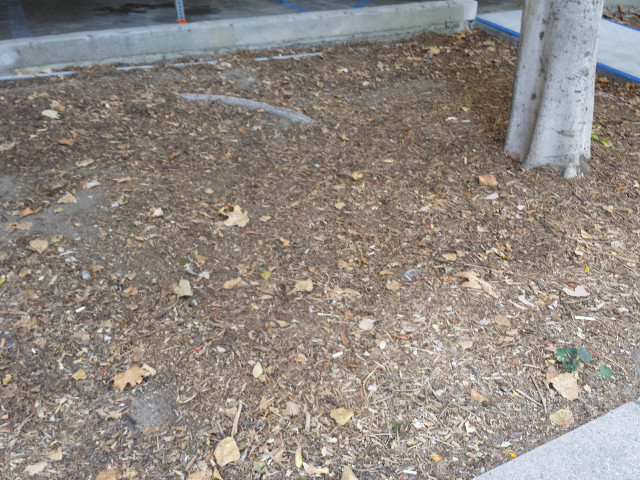
Well, it’s had a good run, and tomatoes are usually annuals anyway.
And you know what, there’s a new tomato plant poking through the mulch a few yards away….
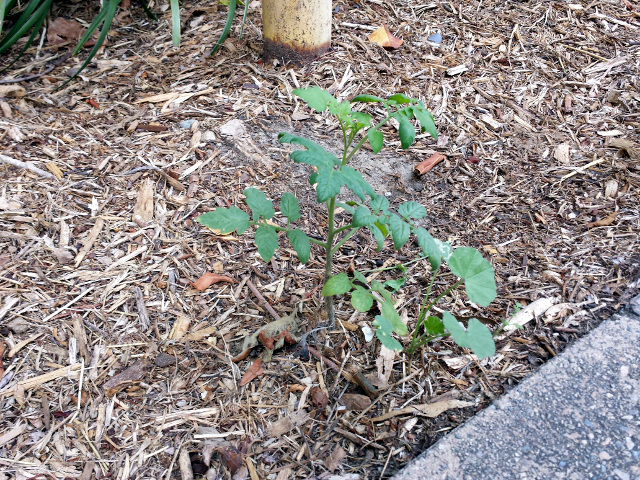
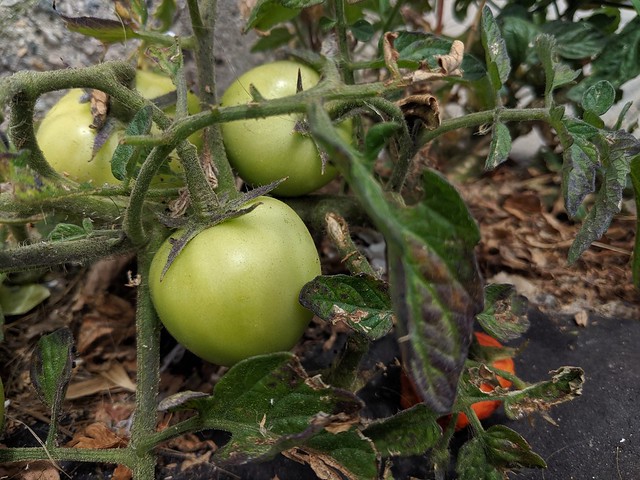

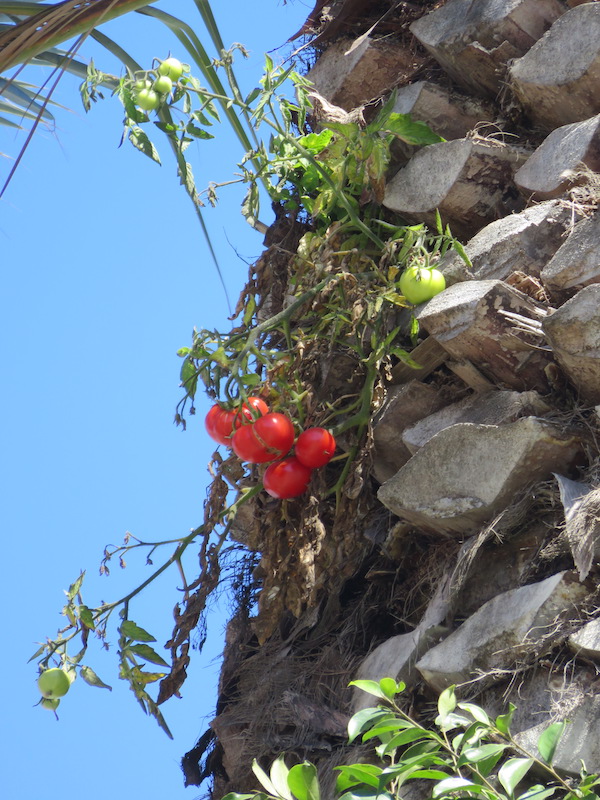
Poor little thing. Do they usually grow all year round in southern California, or do they have distinct growing seasons?
The growing season here will be over soon, depending on how long the weather stays nice. It might last a few more weeks if we have a mild fall, or we might get a frost very soon (one night nearly reached freezing point a couple of weeks ago). Which is too bad, because my plants have recently grown a lot of brand-new cherry tomatoes and they may not survive long enough to ripen.
Tomatoes usually make it through November here, as long as bugs and mildew don’t get to them first, but they don’t usually last through the winter. Every once in a while one will hang on and start producing again in spring. One of this year’s plants was a survivor from last year, but the heat we’ve had this month finally did it in.
Good luck with the late-season tomato crop!
A very resilient plant!